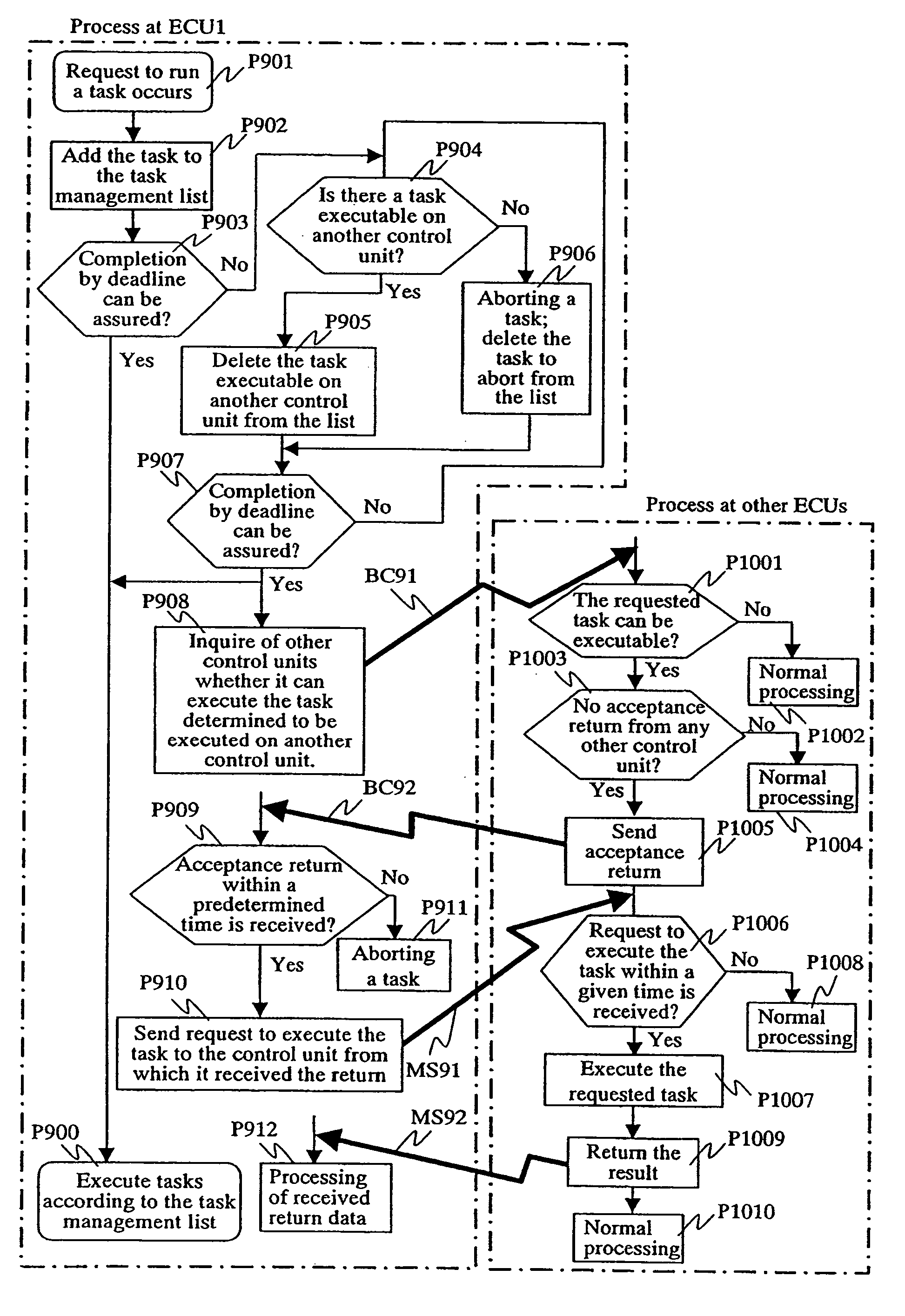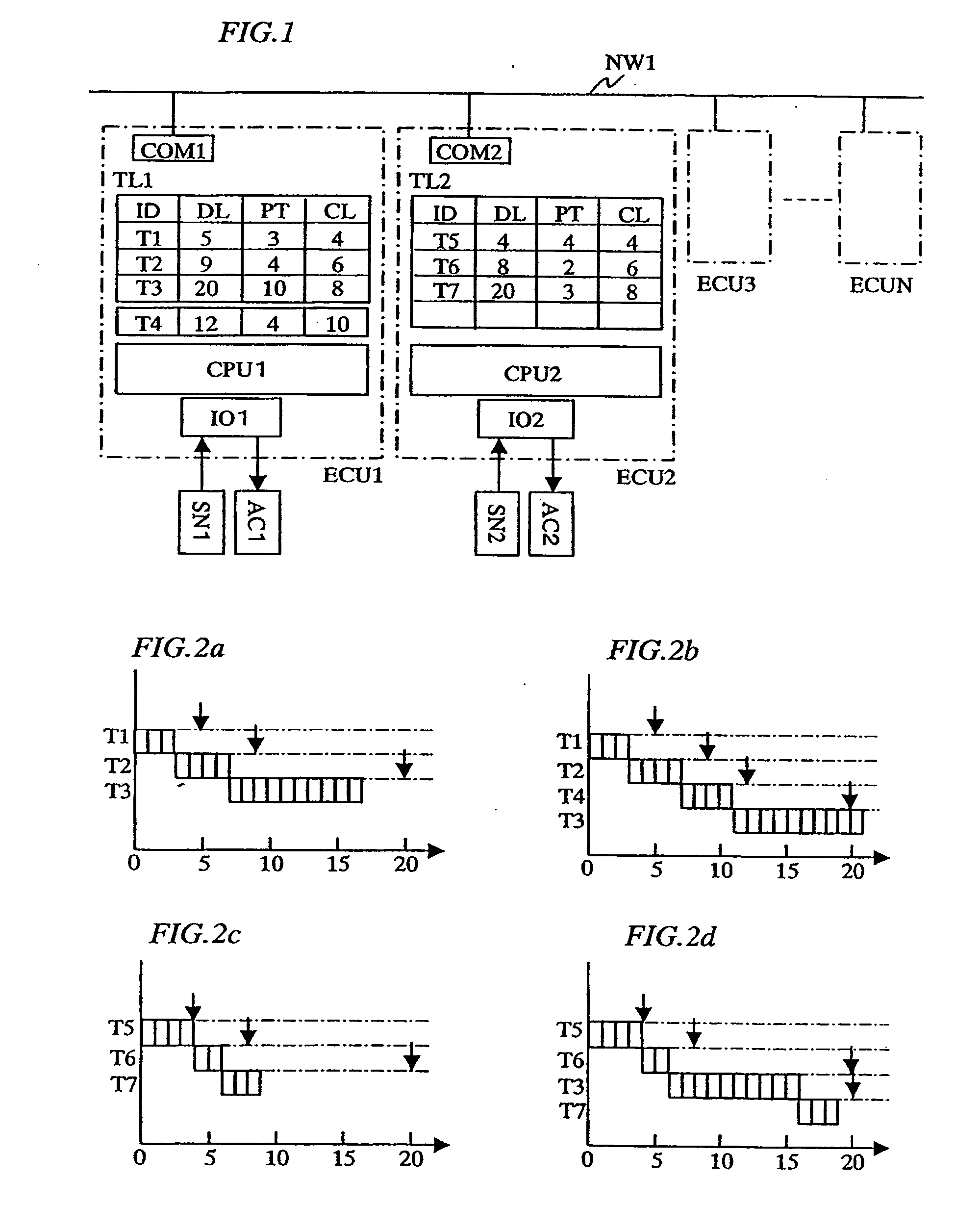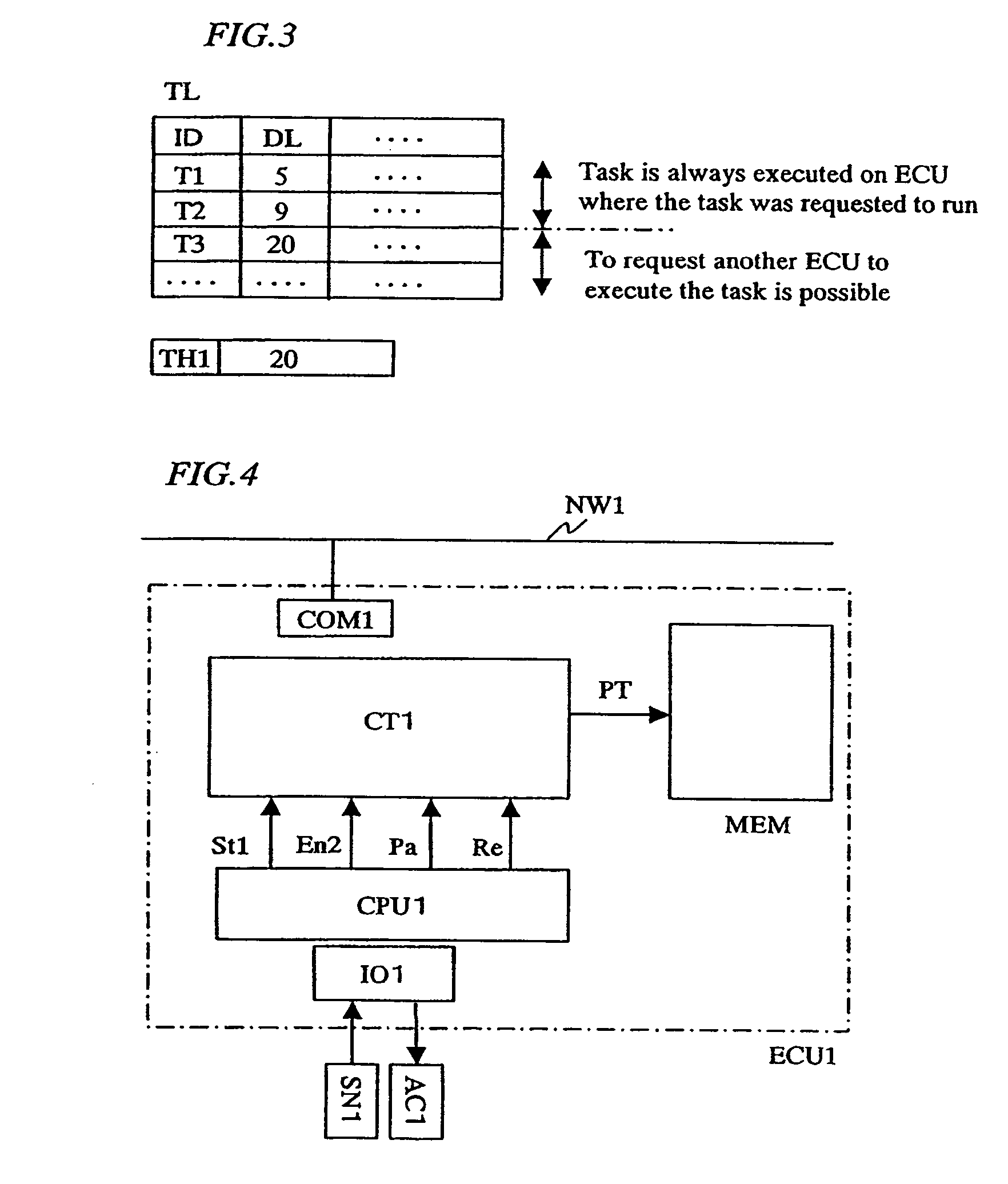Distributed control system
a control system and distribution control technology, applied in the direction of program control, multi-programming arrangements, program control, etc., can solve the problems of inability to ensure the fast response time of all accesses, system cost increase is inevitable, and inability to perform well load sharing, etc., to facilitate the sharing process, minimize the redundancy of the circuit, and enhance the effect of fault toleran
- Summary
- Abstract
- Description
- Claims
- Application Information
AI Technical Summary
Benefits of technology
Problems solved by technology
Method used
Image
Examples
embodiment 1
[0042] Embodiment 1 of the present invention is described with FIGS. 1 and 2. FIG. 1 shows a system schematic diagram where N control units ECU1 to ECUN are connected to a network NW1. However, control units ECU1 to ECU3 only are shown in FIG. 1; other control units are omitted. Internal structures of control units ECU1 and ECU 2 only are shown, as they are necessary for explanation. A control unit ECU1 is internally comprised of a communication device COM1 which is responsible for data communication, connecting to the network NW1, a control circuit CPU1 which processes tasks, and an input-output control circuit IO1 which sends and receives signals to / from a suite of sensors SN1 and a suite of actuators AC1. A task management list TL1 is also shown. The task management list TL1 is a list for managing tasks requested to run and waiting for being executed. This list is stored on a storage area and under the management of, e.g., an operating system run. The control units ECUs are so-ca...
embodiment 2
[0051]FIG. 3 shows a task management list provided to explain another embodiment of load sharing in order that each control unit processes tasks in a deadline-compliant schedule. Embodiment 2 uses the deadline only in determining a task that should be requested of and processed by another control unit. As compared with Embodiment 1, such decision is made in a simple way in this example of load sharing. In the task management list TL on each control unit, necessary information per task ID is managed in the same manner as described for FIG. 1. However, in this embodiment, it is sufficient to manage only the deadline DL information for each task and, thus, the list shown in FIG. 3 includes the deadline DL values sorted in ascending order. Besides, a threshold time TH1 of deadline DL is set separately. The threshold time is stored in a storage area of a memory, register, and the like.
[0052] In Embodiment 2, each control unit executes a task whose deadline is less than the threshold tim...
embodiment 3
[0055]FIG. 4 shows a control unit schematic diagram where task processing time PL registered in the task management list TL on each control unit is updated by past statistical data. The task processing time PT can be considered from a perspective as follows: a task execution flow is predicted and the processing time corresponds to the number of cycles of executive instructions to execute the flow. However, as mentioned in the description of Embodiment 2, the task processing time is difficult to estimate exactly, because it changes, according to circumstances. Thus, in Embodiment 3, means for measuring task processing time CT1 is provided to measure time in which a task is completed. According to actual measurements, the processing time value is updated.
[0056] When a task start indicating signal St1 is input to the means for measuring task processing time CT1, an internal counter (not shown) of the means for measuring task processing time CT1 starts to count. When a task end indicat...
PUM
 Login to View More
Login to View More Abstract
Description
Claims
Application Information
 Login to View More
Login to View More - R&D
- Intellectual Property
- Life Sciences
- Materials
- Tech Scout
- Unparalleled Data Quality
- Higher Quality Content
- 60% Fewer Hallucinations
Browse by: Latest US Patents, China's latest patents, Technical Efficacy Thesaurus, Application Domain, Technology Topic, Popular Technical Reports.
© 2025 PatSnap. All rights reserved.Legal|Privacy policy|Modern Slavery Act Transparency Statement|Sitemap|About US| Contact US: help@patsnap.com



